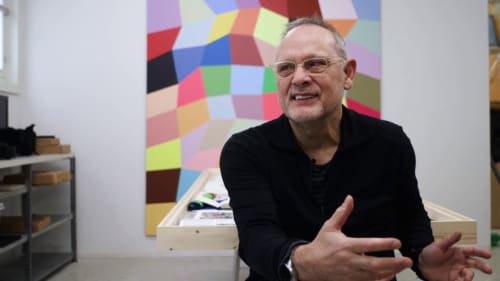‘In my work colour plays an independent game of immaterial occurrences. Colours are assembled and placed through a strict system of chance and choice, conceived to give them the freedom to stay in motion. The ultimate goal is, by using only colour, to make paintings which are humorous, irritating, impossible to catch at a glance, elusive and hard to remember. Leaving you feeling disorientated and confused. Hypnotized.’
Korsmit works the outcomes into images that always remain in relation to the person who helped determine the work. This outcome is always unpredictable and free of figuration. A 'ritualised coincidence', as Korsmit himself calls it. Increasingly, he works together with others and limits his own role to that of intermediary and executor. He then determines only the steps and rules by which a work is created. The contact with the other person and the location where the work is created always influence the execution.
Together with Saskia Janssen, in 2005 they established The Rainbow Soulclub, an art studio in an Amsterdam shelter for the homeless and long-term drug users.
The paintings of George Korsmit (1953, Oudenbosch, NL) are inimitable stacks of form and color, which give the eye - and the brain - no time to rest. The works have their own logic; they are the result of steps and procedures that have been laid down in advance, according to a system that gives a decisive role to chance.

